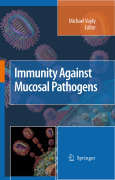
Surprisingly what separates us from the open environment all around us sometimes is a single layer of epithelial cells. It is at these seemingly fragile sites that most pathogens, including HIV, influenza, emerging and biodefense agents, gain access to our inside milieu. While there are major similarities between the cells and the immune responses generated at the mucosal membranes of the gastrointestinal and respiratory tracts together with the genitourinary tract, there are also important differences. Knowledge of these differences and similarities is required in order to understand the interactions between us, asthe host, and the pathogens that attack through each tract, and how our immune system reacts to each of them. Whether we want to devise rational prophylactic or therapeutic vaccines or treatments to either prevent or treat mucosal infections we must acquire such knowledge. This is the rationale behind putting this book together. Highlighing similarities and differences of various mucosal tracts Description of uniques cells of each mucosal tract Understanding innate and adaptive immunity at mucosal membranes Description of some of the most important viral and bacterial mucosal pathogens Concise and yet appropriately referenced chapters written by some of the most authorative figures in MucosalImmunology and Vaccinology INDICE: From the contents Preface. Section One: Structure and Cells of Mucosal Tissues.- Section Two: Immunology of Mucosal Tissues.- Section Three: Gastrointestinal Pathogens. Bacterial Gastrointestinal Pathogens. Viral Gastrointestinal Pathogens.- Section Four: Respiratory Pathogens. Bacterial RespiratoryPathogens. Viral Respiratory Pathogens.- Section Five: Genital Pathogens. Bacterial Genital Pathogens. Viral Genital Pathogens.- Section Six: Mucosal Vaccine Approaches.
- ISBN: 978-1-4020-8411-9
- Editorial: Springer
- Encuadernacion: Cartoné
- Páginas: 535
- Fecha Publicación: 01/06/2008
- Nº Volúmenes: 1
- Idioma: Inglés
